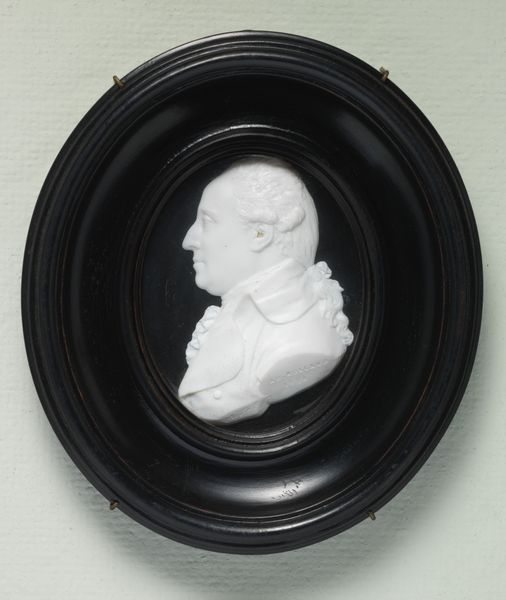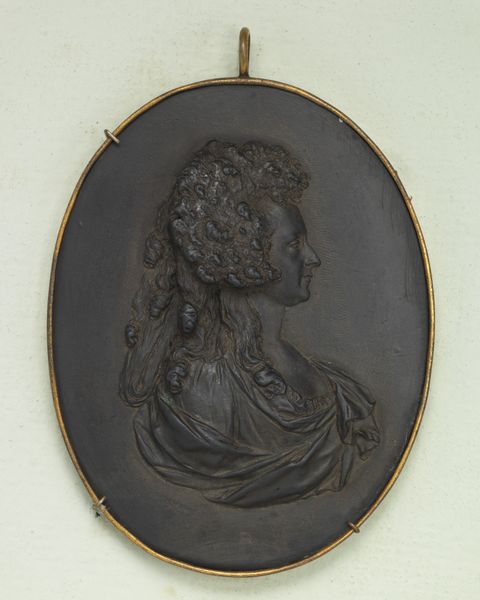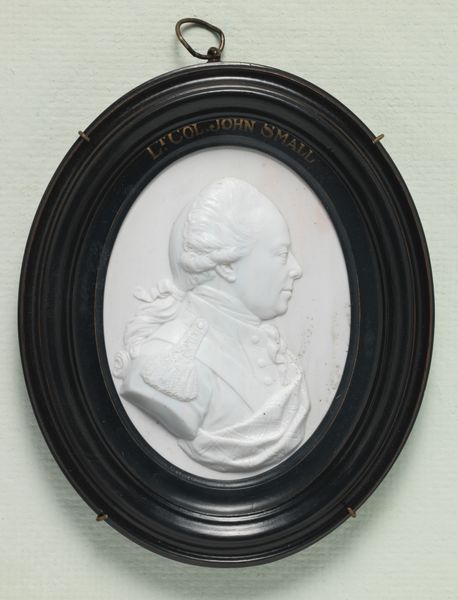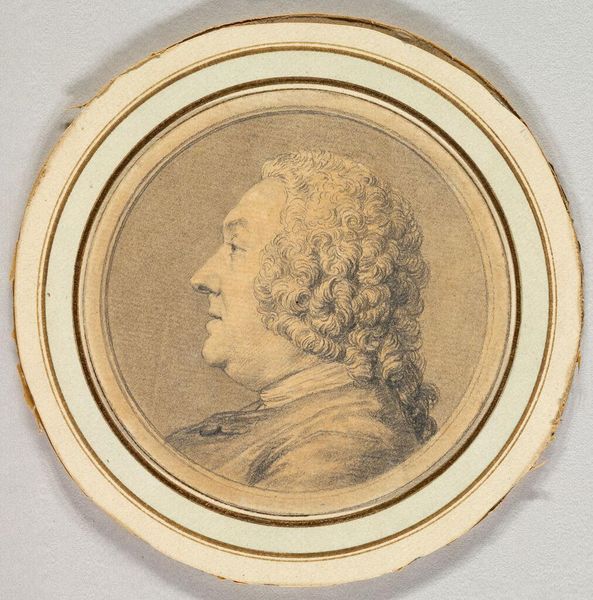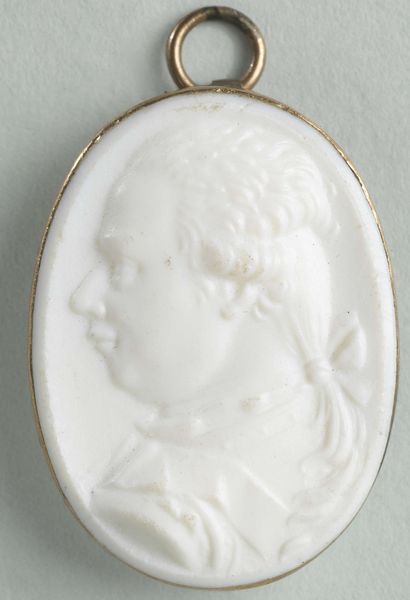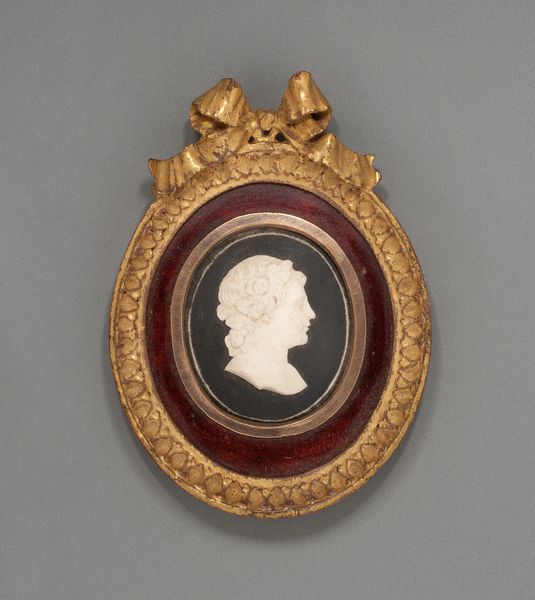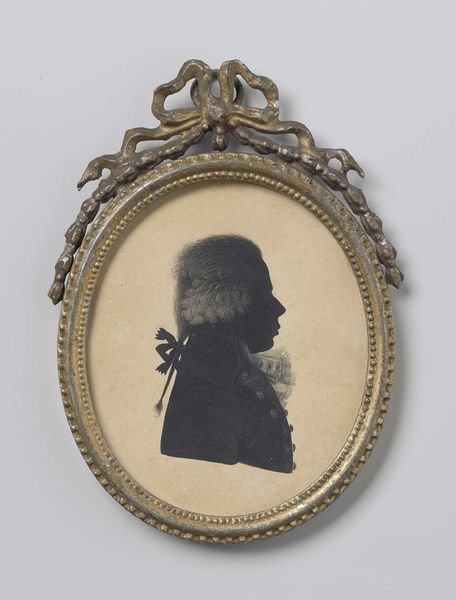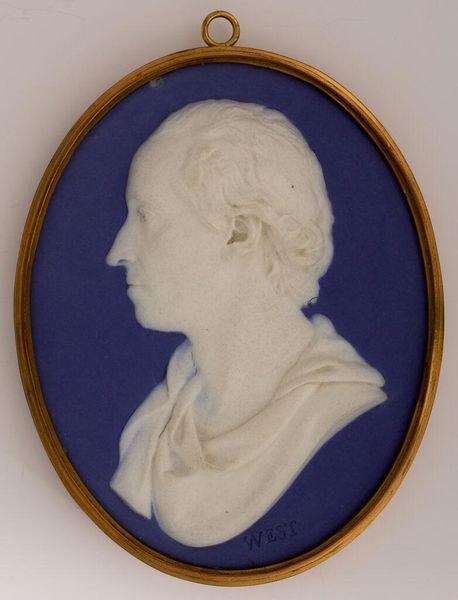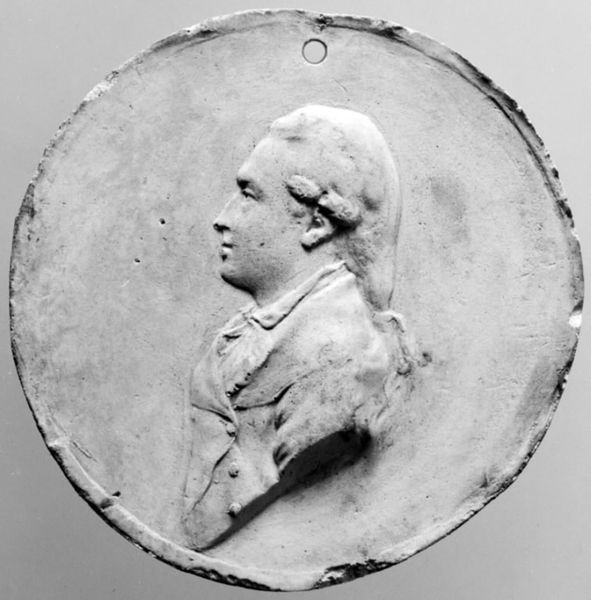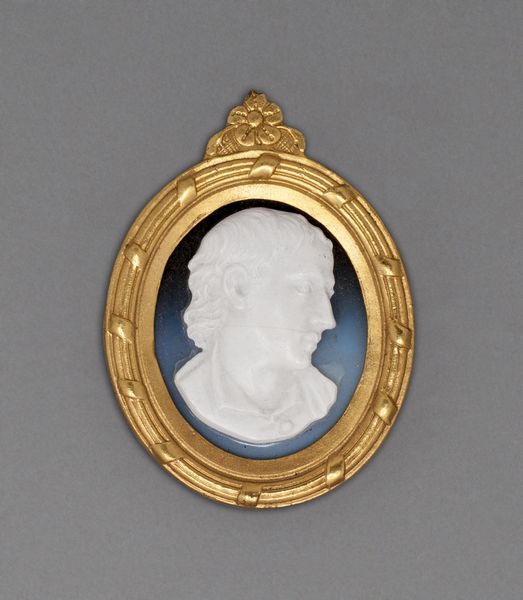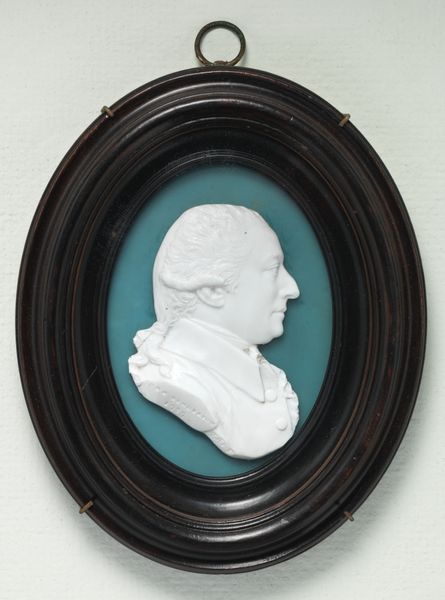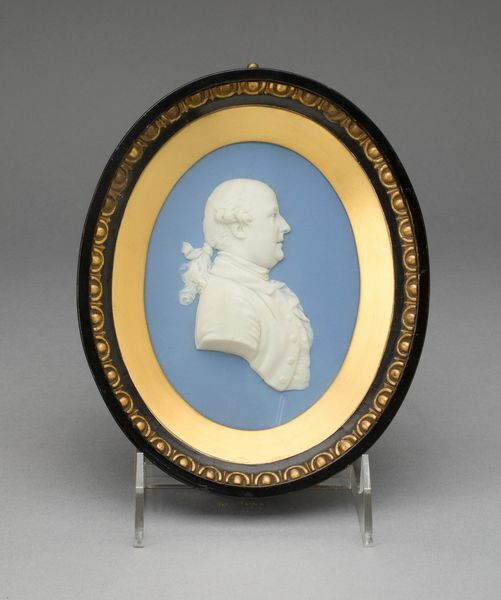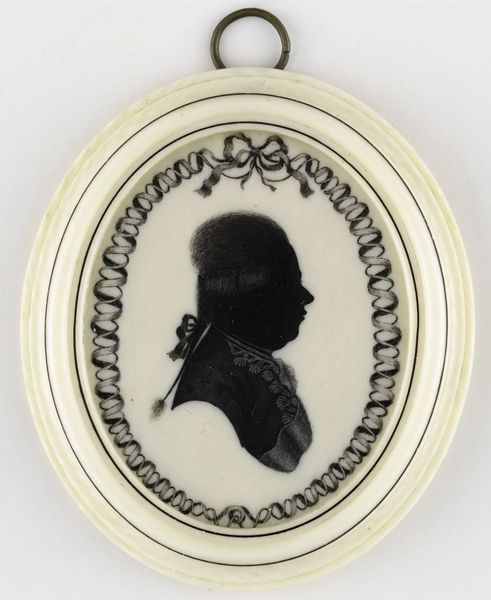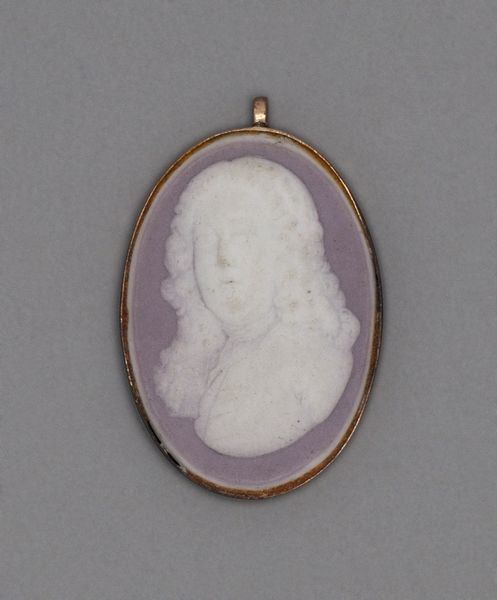
print, engraving
#
portrait
#
baroque
# print
#
engraving
#
watercolor
Dimensions: height 8.9 cm, width 7.2 cm, depth 0.4 cm
Copyright: Rijks Museum: Open Domain
Curator: Immediately, I’m struck by its delicate and ethereal quality. There’s something almost dreamlike about the way the monochrome engraving sits against the stark white oval. Editor: And let’s place that within its time. We're looking at an anonymous engraving dating from between 1745 and 1755, portraying Frederick Louis, Prince of Wales. Consider the context: his complicated relationship with his parents, his political positioning…it all adds layers to how we perceive his image. Curator: Absolutely. Knowing his history—always in the shadow of his father, King George II—infuses the portrait with a quiet melancholy. That fine, almost fragile, line work seems to underscore his vulnerability, despite the armor. Editor: It's interesting you mention the armor, because even that detail reads differently in this monochrome rendering. In the absence of vibrant colours, the metal feels almost weightless, suggesting more symbolic protection than practical defense. Do you think the artist intended to subvert the traditional image of princely power? Curator: I do wonder. What could an anonymous print maker reveal or critique under the guise of simple portraiture? It reminds me of other portraits of the era. Was it intended to show his human side, or was this enforced simplicity simply a by-product of its form, a humble engraving rather than an imposing painted canvas? The colour adds another element, though – is it printed in purple ink, almost regal in tone? It subverts a black-and-white reading slightly. Editor: Right. And considering the context of printmaking at the time, the format speaks volumes. Prints democratized portraiture, making images of the elite accessible to a wider audience. What do we make of the subject: there is the wig, pulled back to show a smooth and rather haughty profile… Curator: Indeed, so perhaps by stripping away some of the excessive opulence usually associated with royal portraits, the printmaker allowed the public to engage with Frederick on a more… human level, accessible. To have an opportunity to assess character in place of costume… Editor: An act of quiet rebellion, perhaps? Who knows what secrets and intentions hide behind seemingly straightforward depiction. As we look at this engraving, perhaps we consider the very idea of princes and the art, not of being princely, but becoming so through public perceptions. Curator: Precisely. This anonymous engraving presents more than just a historical image of royalty. It embodies the intricate dance between image, identity, and social perception.
Comments
No comments
Be the first to comment and join the conversation on the ultimate creative platform.
